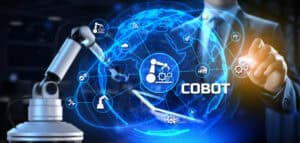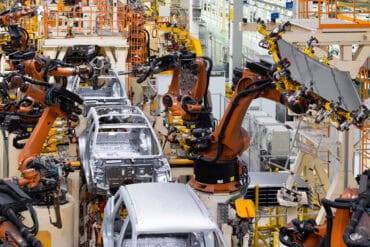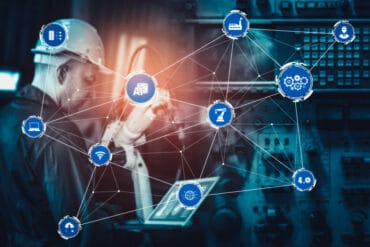
Industry 5.0 represents more than just a technological shift; it’s a philosophical change in how the industry views manufacturing. It demands that automakers blend innovation with empathy, efficiency with sustainability, and precision with creativity.
Like other manufacturers, the automotive industry is beginning to embrace the principles of Industry 5.0. Industry 4.0 revolutionized how automakers build vehicles, bringing automation, IoT, and data analytics to the assembly line. Industry 5.0 reintroduces the human touch, focusing on collaboration between humans and machines, sustainable manufacturing, and resilience.
Specifically, Industry 5.0 shifts the focus from simply making factories “smarter” to making them more human-centric. It blends the best of human creativity with the precision of intelligent machines. For automakers, this means a manufacturing model that is more adaptable to custom designs, more responsive to societal demands for environmental responsibility, and more robust in the face of global disruptions.
While Industry 4.0 was about connecting machines and optimizing for speed and cost, Industry 5.0 challenges automakers to ask: How can technology augment human capabilities? How can automakers create value beyond efficiency?
Industry 5.0 Benefits
Some forward-looking automotive manufacturers have begun piloting Industry 5.0 initiatives. The benefits are already becoming clear.
Some have moved to hyper-personalization of vehicles. This is possible via Industry 5.0 by embracing greater human-machine collaboration. As such, an automaker can now produce highly customized vehicles without sacrificing production efficiency. Customers can personalize interiors, choose sustainable materials, or configure driving features at a level of detail previously unimaginable.
Automakers moving to Industry 5.0 find improved worker satisfaction. It does not replace workers; it empowers them. Employee satisfaction scores have risen in plants where collaborative robots (“cobots”) assist with precision tasks. Workers feel safer, more valued, and more engaged when repetitive tasks are delegated to machines, freeing humans for creative and decision-making roles. These issues are increasingly important as automakers face worker and skills shortages around the world.
Industry 5.0 promises to provide resilience against disruptions. By blending automation with human adaptability, automakers are better equipped to handle unexpected challenges, from supply chain disruptions to shifting consumer demands. Additionally, human oversight ensures flexibility where pure automation might fail.
There are sustainability benefits of enacting Industry 5.0. Automakers can integrate circular economy principles into their manufacturing processes by recycling materials, designing for reuse, and minimizing waste.
See also: What’s Next for Smart Factories? A Look Ahead to Industry 5.0
Technical Obstacles Ahead
Moving from Industry 4.0 to 5.0 is not simple. Automakers face several significant challenges.
The integration of human and machine systems is not simple. Today’s manufacturing systems were designed primarily for automation. Retrofitting them to allow dynamic collaboration between human workers and AI-driven robots requires a significant investment in system design, cybersecurity, and user experience.
There are data complexity and management issues. As machines and humans work closer together, the volume and complexity of data grow exponentially. Automakers need advanced data platforms capable of real-time decision-making, edge computing, and AI inference, all while ensuring privacy and cybersecurity.
Many automakers find they face workforce skills gaps. Employees must develop new skills to thrive in the latest Industry 5.0 environment. They need everything from basic robot programming to understanding how to leverage AI analytics. Workforce retraining is a strategic priority but requires time, resources, and careful management.
Automakers must also find the right balance between automation and human value. They must ensure that technology augments rather than replaces human creativity. Over-automation could undermine the very benefits Industry 5.0 promises.
Technologies Paving the Way to Industry 5.0
Transitioning to Industry 5.0 demands a new technology stack that enables greater collaboration, intelligence, and adaptability. Key enablers include:
- Collaborative Robotics (Cobots): Cobots are safer, smarter, and designed to work side-by-side with humans. Advances in sensor technology, computer vision, and real-time feedback loops allow cobots to adapt instantly to human actions.
- Artificial Intelligence and Machine Learning: AI is crucial for predictive maintenance, adaptive production processes, and personalization at scale. Machine learning models must evolve from rigid automation scripts to flexible, self-learning systems that respond to human input.
- Edge Computing: To support real-time collaboration between humans and machines, decision-making needs to happen at the network’s edge, right on the factory floor, instead of relying solely on centralized cloud systems.
- Digital Twins: Digital twins allow automakers to simulate, monitor, and optimize human-machine interactions without risking real-world operations. They are critical for iterative innovation and rapid problem-solving.
- Sustainable Manufacturing Platforms: Software tools that measure carbon footprint, optimize energy use, and manage supply chain sustainability are becoming core to operations. These tools will need to integrate seamlessly into production environments.
The Road Ahead
Industry 5.0 represents more than just a technological shift; it’s a philosophical change in how the industry views manufacturing. It demands that automakers blend innovation with empathy, efficiency with sustainability, and precision with creativity.






